Do you want to know the secret to getting the most eggs from your chickens?
Maybe you are thinking about adding some to your homestead, and you just love eggs… Maybe you just want a few chickens to graze your backyard, and eat ticks and other pests but wouldn’t mind eating some fresh eggs every day.
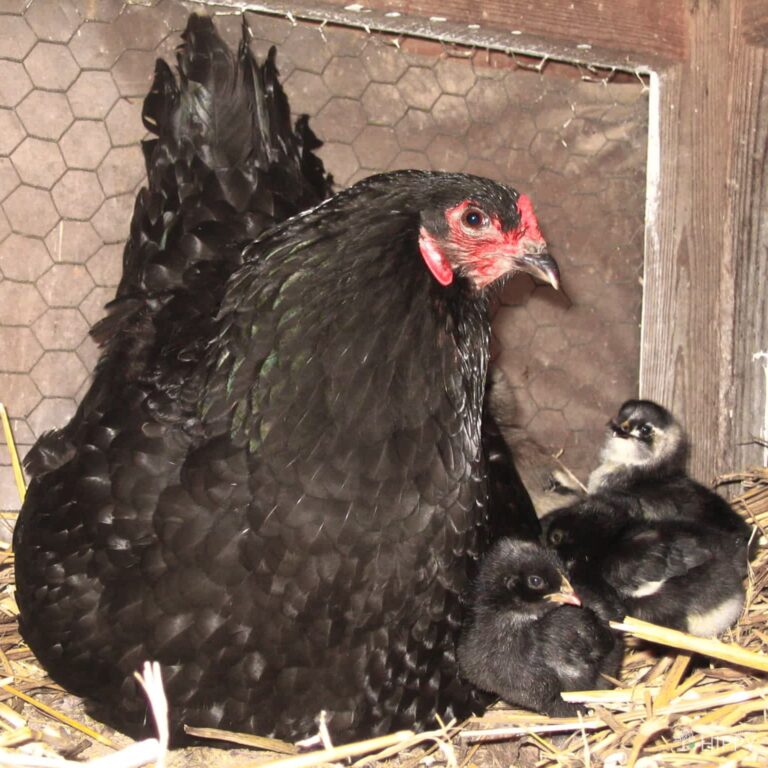
Or maybe you want to use your flock to add a little income to your family’s budget by selling eggs to friends, family, or local customers. You could even sell hatching eggs from some breeds of chickens.
There are many reasons to add egg laying chickens to your homestead….
The easiest and most effective means of maximizing egg production is to obviously choose the breeds that lay the most eggs per year, AND will do so for the longest number of years.
Considerations
But how do you know which breeds stack up for maximum egg production? Some breeds, like Leghorns, were bred with egg production in mind, making them one of the most prolific and most well-known commercial breeds available.
But they may not be the best choice for you. If you’re starting a backyard flock, there are a few other factors you may want to think about…
Number of Eggs
Do you want to select your breed of chicken solely based on how many eggs per year it lays? Then look for a chicken that lays closer to 300 eggs per year, and is not discouraged by the lack of sunlight in the winter months.
Some specialty breeds lay great eggs, but they may not lay as often as standard leghorns. Some chickens are better at laying all year round, although most will take some time off during the winter when there are less hours of daylight.
Lifespan and Egg Laying Span
Some chickens will lay many eggs for two to three years, then drop off production even though their lifespan is closer to eight or ten years. Other breeds may lay fewer eggs per year, but lay for more years.
What will you do with your chickens whose egg production has dropped? Keeping hens that no longer lay will still provide entertainment, bug control, and manure, but the cost of feeding them may not make it worthwhile…
Free Range or Confined?
Will you be free-ranging your chickens, or will you need to keep them penned in?
What kind of area will your chickens be living in? You may want birds that lay a lot of eggs, but do you have enough space to keep them healthy and happy?
A free range chicken is one that sleeps in a coop at night, but is allowed to roam free during the day. Some townships and locations might allow chickens that live in pens but not chickens that free-range.
Some folks will keep their chickens in a pen most of the time, but allow them a few hours of freedom in the afternoon.
Chickens that are good foragers will find a lot of their own food in your yard, saving you money on chicken feed. This translates to cheaper but more nutritious eggs with brighter yolks.
Temperament
If you have young children or frequent visitors, you will want to consider the temperament of your hens. Some hens are very friendly and docile with people, but maybe not so easygoing with other breeds of chicken.
Some hens are friendly with other chickens, but maybe not so friendly with people. Some breeds of chicken are nervous and flighty, which may not be a good mix if you have a young family or other pets. Rooster temperament also varies greatly.
If you’re going to keep a rooster or several, consider whether they are aggressive, protective, and safe to keep around your small children and other animals. Some roosters are gentle and sweet, others can be very mean and aggressive.
Dual Purpose
Some chickens are bred solely for egg production, while others are bred for meat production. Dual purpose chickens, which often include heritage breeds, are known to be good for both.
This is important if you hatch your own birds from eggs so that extra roosters and even extra hens can be harvested for meat. Many homesteaders will look to raise dual purpose birds so they can have meat and plenty of eggs.
Aesthetics
Some chickens are great layers, but are not that pretty to look at. White leghorns and Lohmann Browns are great layers, but are not rather plain. Plymouth Rocks and Ameraucanas are cute to watch darting about in your yard, but will lay slightly less eggs.
There are hundreds of chicken breeds that you can choose from. To help you, we’ve selected ten of our favorite egg layers. Which ones will you add to your flock?
The Best Egg Laying Chicken Breeds
Here are some of the best chicken breeds to produce lots of eggs of different colors and sizes – some of them even make great pets!
White Leghorn
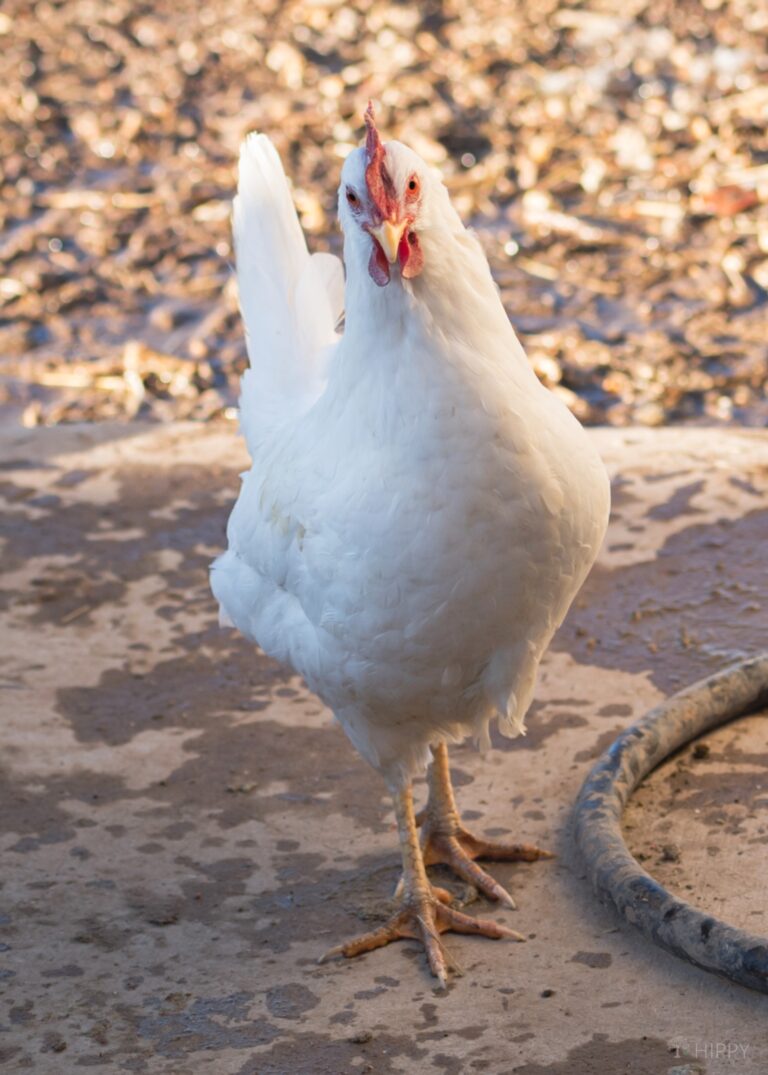
If the number of eggs per year is your main consideration, you might want to give White Leghorns a try. These white hens will give you around 280 large white eggs per year. Their excellent feed to egg ratio means they don’t eat a lot, and they’re good foragers.
The downside to a leghorn is their temperament, though. These birds are quite flighty, which may not make them suitable to family with small children or dogs
The leghorn has a sleek, athletic body. Their smaller stature makes them less than appealing as a meat bird. These birds have red wattles and white earlobes. The larger single or rose comb gives them a comical look, characterized by the infamous cartoon character, Foghorn Leghorn.
The leghorn is intelligent and active, as well as noisy. Leghorns tend to be high strung and easily bored, and also aloof from human contact. These busy birds may roost in trees if not penned up.
Leghorns are a favorite of the poultry industry because of their ability to lay so many eggs per year for three to four years. Leghorn hens rarely go broody. Chicks grow quickly and full size hens weigh in around five to six pounds.
Leghorns were originally called “Italians,” because the breed originated in Tuscany, Italy, and were brought to the United States in the 1800s.
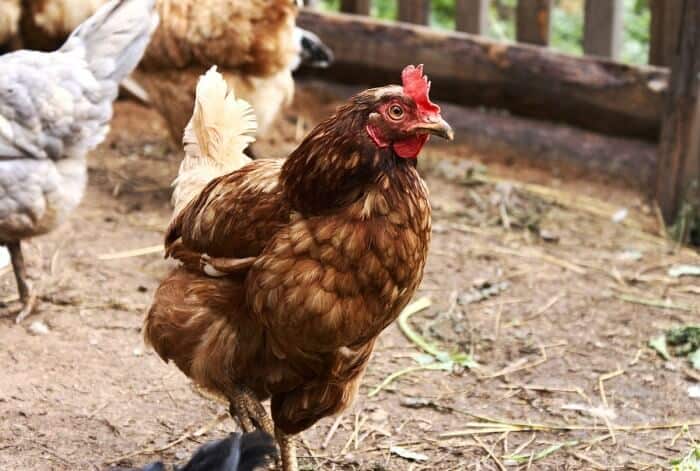
Lohmann Brown
This breed might be the best of the best for the average homestead. With egg production comparable to a leghorn, your Lohmann Browns will lay about 300 large brown eggs per year.
Better yet, these chickens are ideal for small spaces and backyards without a lot of room to roam. Their personality is friendly and docile and they are hardy chickens.
One advantage to owning this breed is their early laying – many start laying as early as 14 weeks. Lohmann Browns are difficult to find in the United States, but may be more readily available in the UK and South Africa.
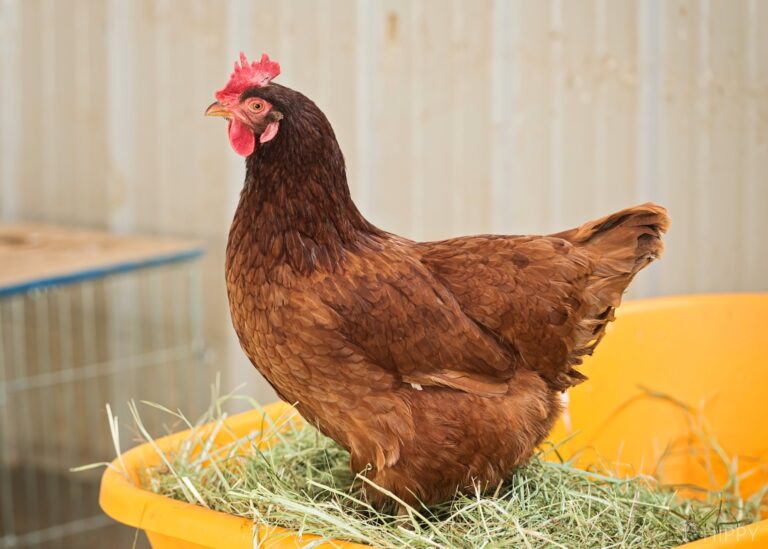
Rhode Island Red
A good Rhode Island Red hen will lay between 200 and 300 eggs per year. Bred as a dual purpose bird, these hens make great layers and the heritage version makes for great meat, as well. Rhode Island Reds are active and curious foragers. They do well free ranging.
Although the hens are docile and laid back with people and chickens, the roosters can be aggressive.
Most Rhode Island Reds have big personalities and can be the characters of the backyard flock. They are fun to watch and easy to enjoy. RIR’s are hardy birds and have few health problems. They can thrive in most climates on most types of chicken feed.
The Rhode Island Red is the state bird of Rhode Island.
Golden Comet and Other Sex Link Chickens
Golden Comet chickens are also called Red Sexlinks. These birds are a hybrid chicken, from a male production red and a female Rhode Island Red.
While you can tell the gender of these chicks by their color, breeding golden comets to each other will not produce more golden comets but a range of colored hybrids.
They lay a whopping 250 to 320 large brown eggs per year. This hybrid bird is gentle, friendly, and cold hardy.
Golden Comets were bred in the United States specifically for egg production and hens do not tend to go broody. Chicks grow quickly and may begin laying at 16 weeks of age. Golden Comets also make excellent meat birds.
They are not accepted by the APA because they are a hybrid chicken. You may not be able to formally show these chickens, but you will probably enjoy showing them off on your own homestead.
Other sexlink chickens come in a variety of colors, the most popular being black sexlinks and red sexlinks.
These are hybrid chickens, crossbred for temperament, laying ability, feed to ratio, adaptability, and the ability to tell the gender of the chick by color. Sex links vary greatly, as each hatchery has its own secret recipe to creating this all-around, great bird.
Red sexlinks can produce over 250 brown eggs per year, with an excellent feed to egg conversion ratio. This makes them a great choice for the backyard producer.
They are not a large bird, so they adapt well to confinement and free-ranging. They are hardy in both warm and cold climates.
Black sex links are a similar chicken, however, they are slightly larger, making them a better dual purpose bird with a lower feed to egg ratio. While red sexlinks can be bossy towards other chickens, black sex links are more docile and tame.
Both types are great layers, but the black sexlinks may be a better choice in a homestead situation, while a red sexlink may make more sense for a larger, more commercial operation.
Although they are great egg layers, they are not accepted by the American Poultry Association for show purposes.
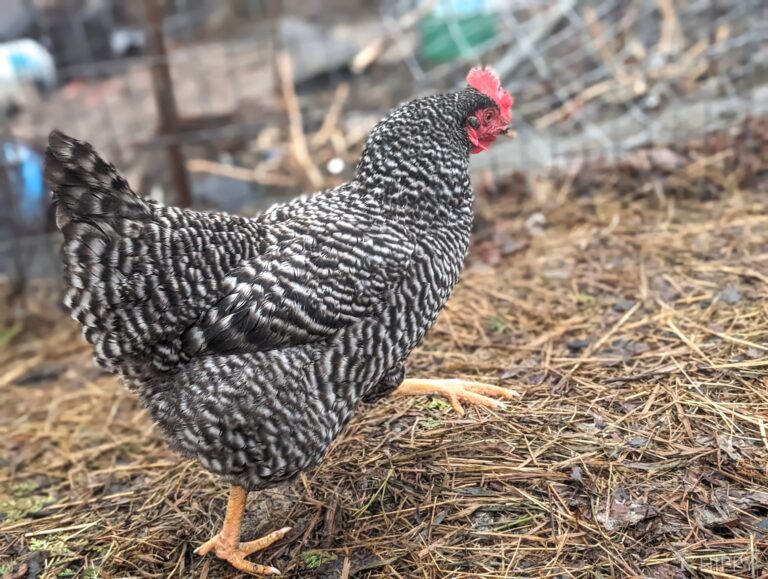
Plymouth Rock
The Plymouth Rock or Barred Plymouth Rock is one of the most popular chickens in the U.S., and for good reason. This dual-purpose breed lays around 280 light brown eggs per year. These large, hardy hens also do well in cold weather.
They’re very friendly with children because of their calm and friendly disposition. They may beg for treats or even sit in your lap!
These chickens are adept at foraging and do well in free-range environments as well as in confinement. Their quiet nature makes them easily suitable for the backyard homestead.
Roosters may be a bit protective of their hens, but have been known to assist mother hens by taking their turn sitting on the clutch of eggs. Their barred plumage makes them pretty to watch.
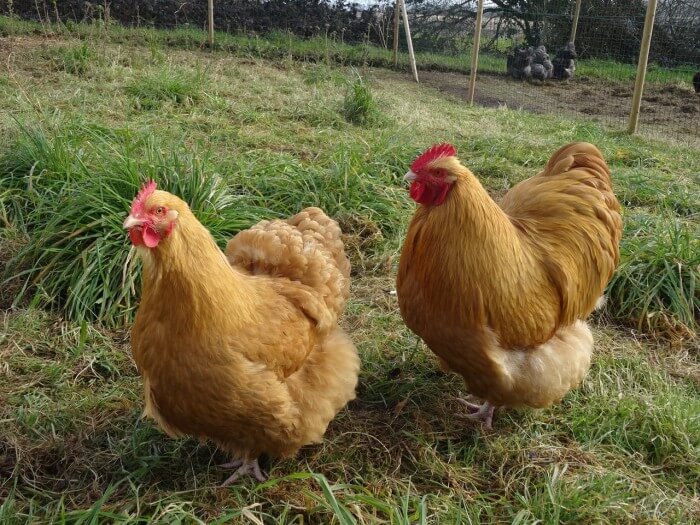
Buff Orpington
These chickens are the teddy bears of the chicken world. This large, docile bird does well in confinement and lays a solid 200 to 280 brown eggs per year. They are friendly and easily handled, tolerating children well.
Buff Orpingtons do not free range well, and would prefer to dine from a feeder topped off with their favorite chicken pellets. They tend to be very broody – in other words, they love to sit on eggs and raise their own chicks.
This dual purpose bird does well in the cold, but will need some relief from the hot summer sun.
Make sure there is plenty of water and shade available for these heavy birds. Along with the Barred Plymouth Rock, they are one of the most popular additions to small backyard family flocks.
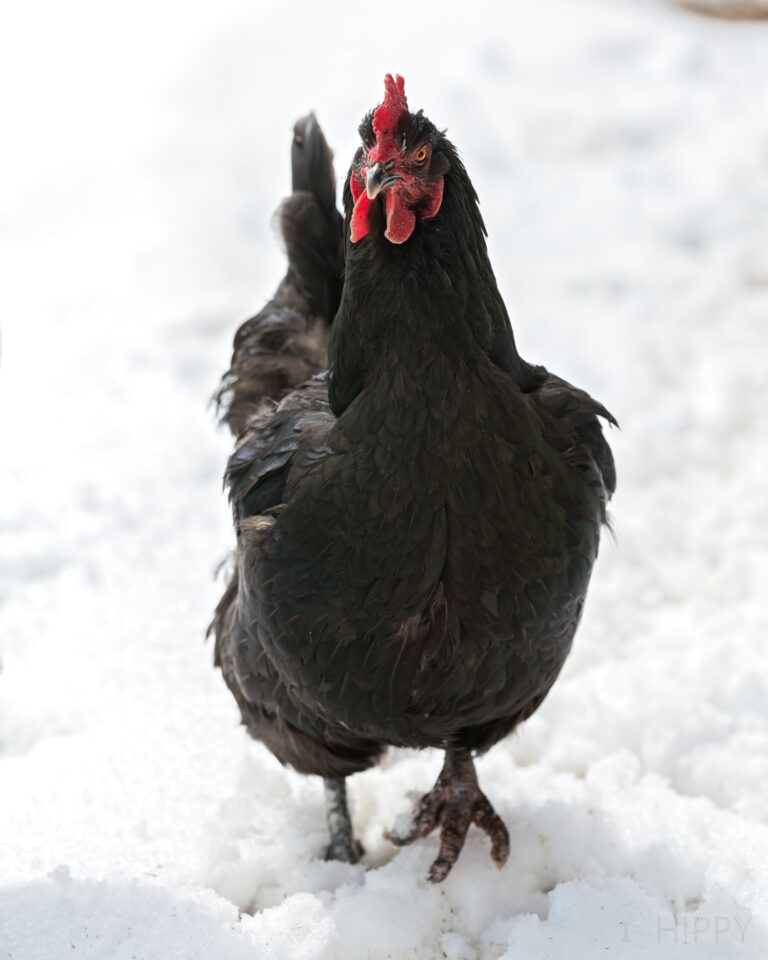
Australorp
This easy to rear breed of chicken originated in Australia. Bred for egg production, these hens typically lay at least 250 large brown eggs each year. The record-holding hen laid 364 eggs in one year without extra coop lighting.
Australorps do well in confinement, but also love to forage for bugs in your backyard. These hens are both quiet and calm, with an easy-going disposition. Even roosters are said to be more laid back. They are hardy and thrive in all temperatures.
These docile birds may be a bit shy at first, but will warm up to you with a little time and attention. Their hardy nature makes them a good choice for beginner chicken keepers.
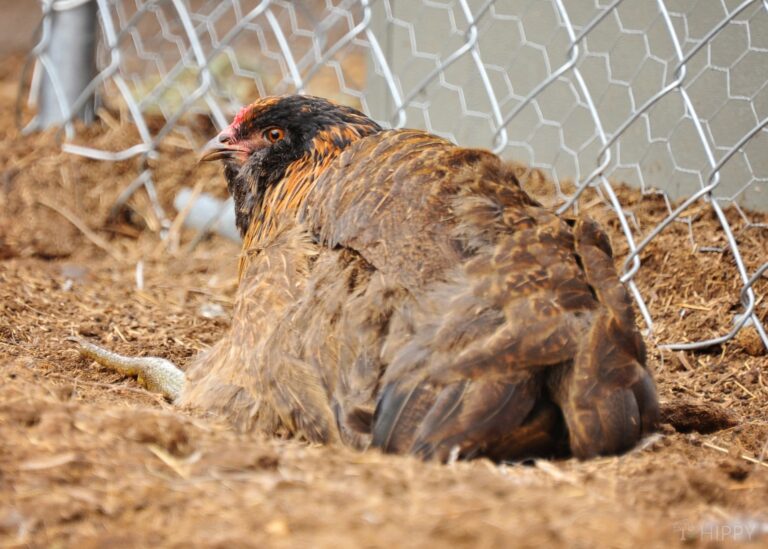
Ameraucana
Ameraucana is often interchanged with the term Easter Eggers, although some would claim these are two different breeds. This chicken was recently developed in the 1970s.
The Ameraucana lays a blue tinted egg, while Easter Eggers eggs come in a variety of colors, from green to pale pink. Both types of bird display a wide variety of plumage color…
Although these birds can be kept in confinement, they’re happiest when allowed free reign of your backyard. They are smart, predator savvy, and hardy birds. They can thrive year round if kept out of winter drafts. They lay around 250 multi-colored eggs per year.
It is important to note that true Ameraucanas are rather expensive, while Easter Eggers, Americanas, and other similarly named chickens will be much less expensive.
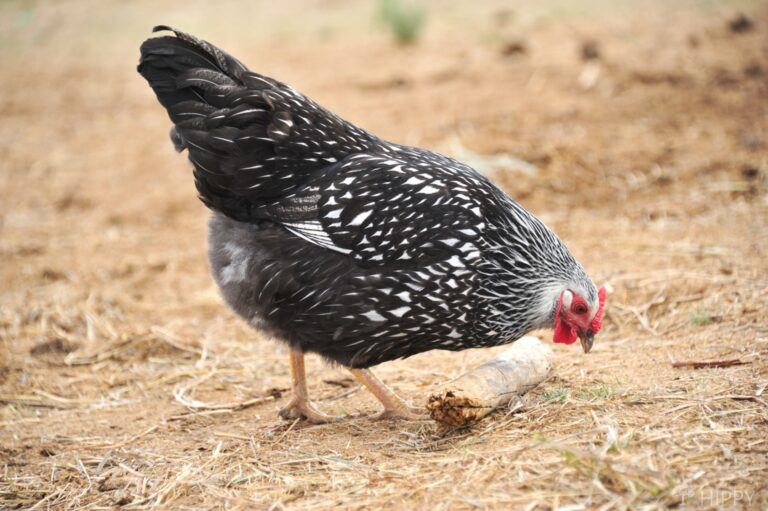
Wyandottes
Wyandottes are a favorite chicken breed for homesteaders. This breed was the first dual purpose breed of chicken developed in the United States and named in honor of the Wyandotte Indian Nation.
Wyandottes have beautiful, multi-colored feathers with a laced appearance. They are available in a variety of colors such as silver laced, gold laced, black, buff, blue, and red.
They are a larger sized chicken, making them a great dual purpose bird for meat and eggs. They lay around 200 light brown eggs per year and can live up to ten or twelve years.
They adapt well to confinement, but will enjoy free-ranging as well. Wyandottes have been known to eat all manner of bugs, small frogs, rodents, and even small snakes.
These chickens are curious, docile, and friendly with people, and the hens are very easy going around children. They are slightly aloof with other breeds of chicken. Rooster temperaments can vary greatly, so be aware of rooster behavior around small children.
Wyandottes are good sitters and good mamas, fiercely protecting their babies. Some have been spotted attacking a hawk to protect their young.
Runners Up
Delawares
This relatively new breed of chicken is a medium sized, dual purpose bird, making it a great choice for a sustainable flock. Hens lay around 200 eggs per year.
Their disposition is calm, friendly, and curious. Delawares feather out fast, and grow quickly. They are on the critical list with the American Breed Livestock Conservancy.
California White, California Gray
These hybrid chickens make great layers, coming in around 300 large white eggs each year. They are docile, adaptable, and lay year round.
This is a quiet breed that is easy to handle and does well in confinement and free-range. It is not recognized by the American Poultry Association.
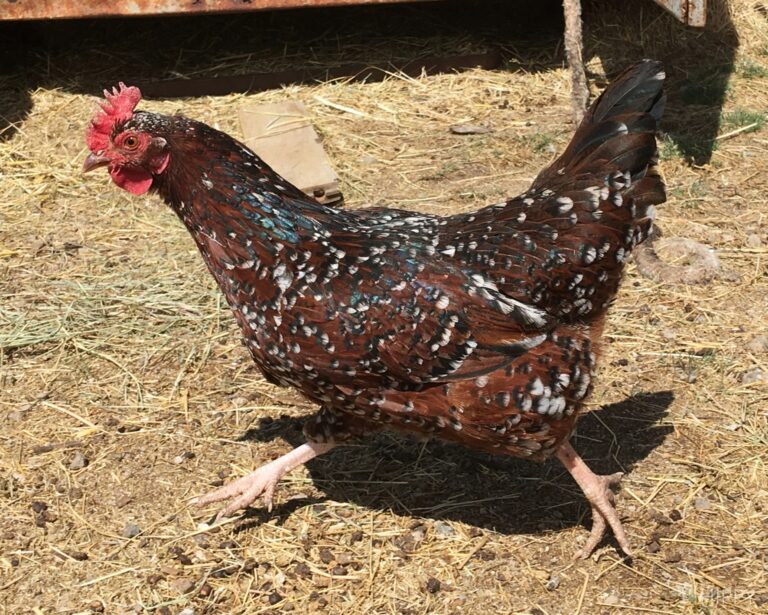
Speckled Sussex
If looks are important, you will love the speckled Sussex. The speckled brown plumage is both beautiful and protective from predators.
They are a gentle dual-purpose bird that lays around 250 – 300 eggs per year. Despite their larger size, these docile chickens are often bullied by other chickens.
Barnevelder
The barnevelder is rare in the United States, but its dark brown eggs make for a beautiful addition to the homestead. They sport a beautiful double-laced brown feather pattern.
This breed lays 150 to 200 dark chocolate colored eggs per year. They are a docile and easily tamable bird, with a good potential for calm and friendly roosters. They are quiet but chatty.
Ancona
Ancona chickens are a heritage breed of chicken that is known for being good egg producers. They are a popular choice for backyard flock owners, as they are relatively easy to care for and do not require a lot of space.
Ancona chickens typically lay around 200 eggs per year, which makes them one of the most productive egg-laying breeds. However, they can be prone to broodiness and may stop laying eggs if they do not have access to a nest box.
New Hampshire Red
New Hampshire Reds are one of the best egg laying chicken breeds. They are known for their large brown eggs and their high production rates. On average, they will lay around 250 eggs per year.
The New Hampshire Red is a variety of chicken that was developed in the state of New Hampshire in the early 20th century.
The breed was created by crossing several different varieties of chicken, including the Rhode Island Red and the Plymouth Rock.
The resulting breed was well-suited to the cold winters of New England, and quickly became one of the most popular chicken breeds in the region.
Today, New Hampshire Reds are still valued for their hardiness and versatility, and are widely used for both egg production and meat production.
Araucanas
Araucanas are a breed of chicken that is best known for its egg-laying abilities. The breed originated in Chile, where it was developed by crossing local chickens with those from China and England.
Araucanas are typically smaller than other chicken breeds, and they have a unique physical appearance, with tufts of feathers around their ears.
The eggs laid by Araucanas are also distinctive, as they tend to be blue or green in color. In terms of egg production, Araucanas are one of the best breeds, with hens typically laying around 280 eggs per year.
However, the breed does have some drawbacks, including a tendency to be skittish and flighty.
Worst Egg Laying Chickens
Now that you know some of the best breeds of laying hens to raise, here are some of the worst possible breeds to consider for egg production…
Polish
Polish chickens are a funny and delightful addition to the flock, but they are not known for egg production, broodiness, or mothering. They have large beautiful crests that are sometimes white.
Silver Phoenix and Golden Phoenix
These ornamental chickens have gorgeous long tails, but produce eggs poorly. They are not cold hardy and need special accommodations to support their tails.
Cochins
Cochins are another slow-maturing breed, taking around 20 weeks to reach sexual maturity and begin laying eggs. They’re also relatively small birds.
Brahmas
Brahmas are a slower-maturing breed, meaning they don’t reach sexual maturity until later in life and won’t begin laying eggs until around 18-24 weeks old. Additionally, Brahmas typically only lay around 100-120 eggs per year.
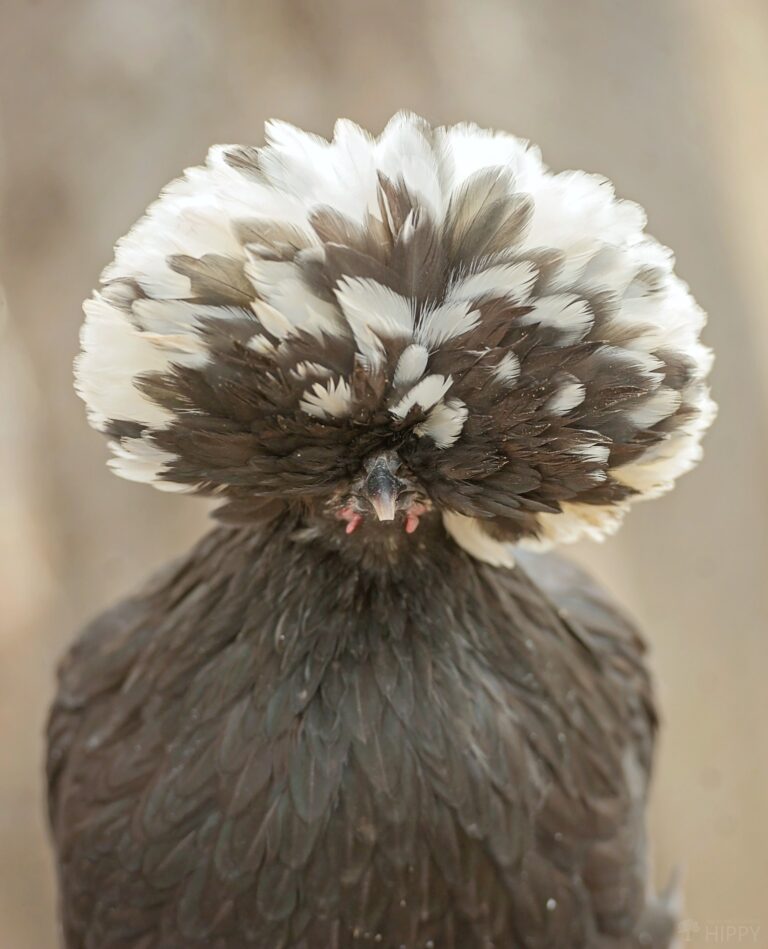
Polish
Polish chickens are beautiful birds, but they’re not great layers. Hens will often go broody and they typically only lay around 50-60 eggs per year.
Summary
Highest egg production. If your only consideration is egg production, you may want to choose White Leghorn, Lohmann Brown, or Rhode Island Reds for your homestead. With the highest egg production, these chickens will keep you eating pretty much all year round.
Best feed-to-egg ratio. Red sexlinks by far offer the best feed to egg ratio. While they aren’t the most easy-going to other breeds of chicken, they make great layers for small or large production farms.
Friendliest. If you want a friendly layer, Buff Orpingtons and Plymouth Rock are some of the best. They do well with children and lay a substantial amount of eggs.
Dual-purpose. If meat is also a consideration, try a dual-purpose chicken such as a Wyandotte, Barnvelder, and Plymouth Rock.
Prettiest. If you are looking to add a little beauty to your farm, try Speckled Susse and Delawares for their beautiful plumage and bountiful eggs.
Best All Around Egg Layer. The best all around egg layers are probably Plymouth Rock and Wyandottes for their pretty colors, dual-purpose, great temperaments, free range and confinement, and of course, steady egg laying.
FAQ
The Leghorn chicken is the most common breed used for egg production. These chickens are known for their high egg output and their white eggs. They typically weigh between four and five pounds and have a single comb.
Their small size and active nature make them well-suited for confinement, and they are also relatively resistant to disease.
The Isa Brown chicken is a hybrid breed that is known for its high egg production. On average, an Isa Brown chicken will lay 350 eggs per year, making it one of the most productive egg-laying breeds in the world.
The breed of chicken can be important, as some breeds are known for producing higher-quality eggs than others. However, it is also crucial to consider how the chickens are raised.
Chickens that are well-fed and have plenty of space to roam tend to lay healthier eggs than those that are overcrowded or forced to eat a poor diet.
For anyone looking to maximize egg production, the sex link chicken is an excellent choice. On average, these chickens lay around 260 eggs per year, making them one of the most productive breeds available.
Sex link chickens are also known for their hardiness and good health, meaning they require less care than some other breeds.
Conclusion
The number of chicken breeds available can be overwhelming. If you are trying to decide what type of chicken to add to your homestead, ask yourself a few questions.
Why do you want to add chickens to your homestead? Is egg production your number one concern? Then a white leghorn may be just the right thing.
Do you have small children? Then you may want a more docile chicken such as a buff Orpington. If you want a mix of aesthetics, egg production, dual-purpose, and temperament, wyandottes are a great choice.
Other chickens may be a great addition, but are hard to find, such as the Lohmann Brown and the Barnevelder.
Selecting the right chicken breed for your homestead is a very personal choice and may require a little trial and error. But with time and patience, you will find the best choice of chicken breed for your egg laying needs.
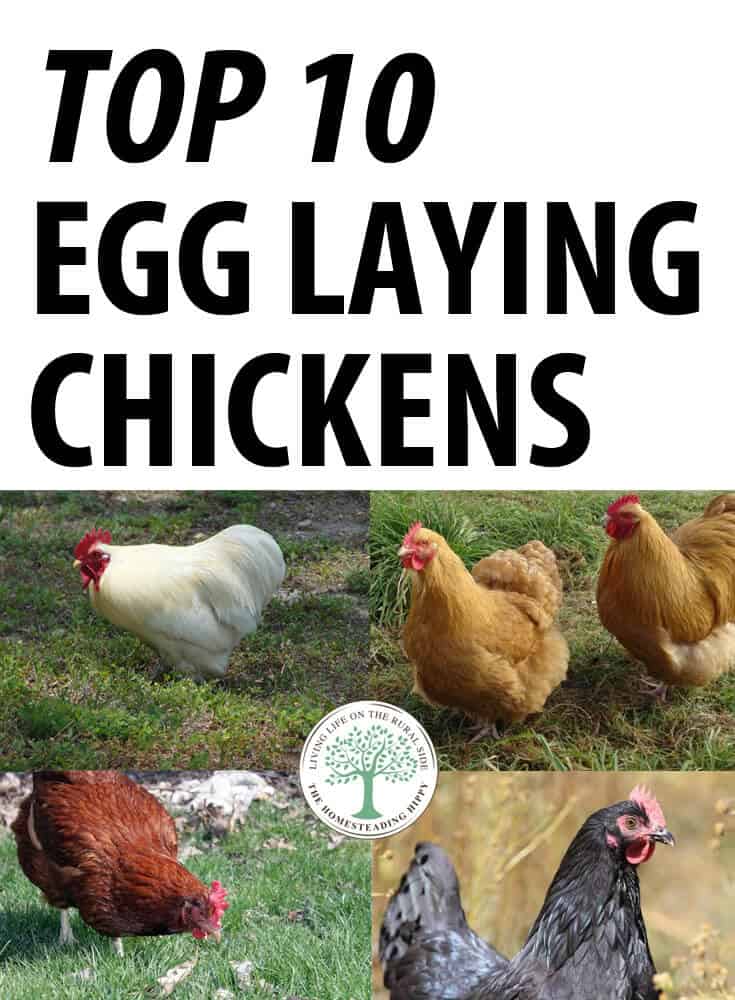

Amanda is a homesteader and a Jesus-loving, mother of 6 toddlers. She’s raising lots of fancy chickens and goats on her small homestead (among other things). Find out more about the team here.

I’ve had chickens since 2010. I currently have 4 hens (max allowed in my town); 3 Australorps and a Barred Rocks. The Barred Rocks also is great comedy relief. Extreme smart and curious which gets her into trouble.
I get plenty of eggs from the 4 hens, year round.
I’ll vouch for Barred Rock as a good breed. I’ve had them for years. They handle New Hampshire winters in stride and even like to eat snow. They lay well and dress out to a decent roasting size after retirement. They are mild-mannered and sociable.